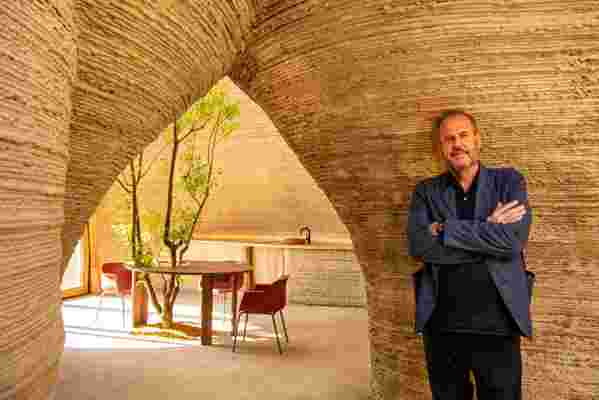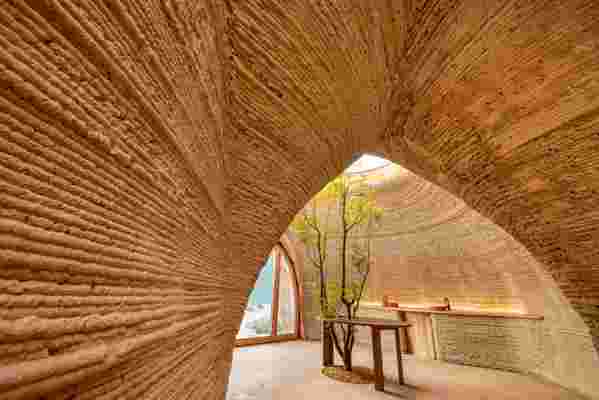Take a Look at One of the World’s First 3D-Printed Homes
Aside from exquisite architecture and groomed landscapes, one shared element among all of the world’s iconic estates—from Château de Chambord in France’s Loire Valley to the Ca’ d’Zan in Sarasota, Florida—is a name worthy of the property. Bologna- and Milan-based Mario Cucinella Architects’ latest project, which was just unveiled in the Italian city of Ravenna, may not be quite as enormous as the châteaux in France or Venetian Gothic revivals in Florida, but it does bear a memorable name that represents the completely innovative venture: Tecla, a 645-square-foot structure whose shell is made entirely of local clay, is one of the world’s first 3D-printed homes. The name—inspired by Italian writer Italo Calvino’s fictional city of Thekla—evokes ancient architecture’s timelessness with an undeniable 21st-century edge.
It may not be considered a mansion, but 3D-printing company WASP’s revolutionary technology was able to build the unique dwelling, which boasts a bedroom, living area, and bathroom, in just 200 hours. The printer may have been doing the heavy lifting, but the skilled architects were the brains of the operation, carefully curating every detail of the space. From the pleated exterior bulbs to the sturdy and sustainable material, the minimalist home is completely self-supporting, eliminating the need for an intricate framework.

Italian architect Mario Cucinella inside the 3D-printed home he designed.
Another deliberate choice was the material: clay made by combining local soil and water, which both streamlined the building process and created a sense of cohesion between the home’s exterior and interior. Not to mention, the material is a direct response to the changing world climate. Cucinella’s reasoning? Underserved communities that aren’t exactly reaping the benefits of industrialism can use any (and all) available natural materials to efficiently and sustainably build low-cost homes. Not only do natural elements minimize the harmful effects of producing common synthetic building materials, but they also offer a slew of built-in benefits. For instance, Tecla’s specific type of clay is self-insulating, meaning it can balance both thermal mass and wall ventilation on its own. In other words, there’s no need for an air conditioner or furnace because Tecla is as adept at maintaining an enjoyable climate as the 3D printer is at efficient construction.

Inside Tecla, the new 3D-designed and -printed home that is all about tradition and nature.
The interior architecture, gently curved and minimalistic, represents a sharp departure from the classic styles—Romanesque, Baroque, and neoclassical—that define the surrounding structures in Italy. There’s an undeniable warmth that runs rampant throughout the small space that lends itself to the architecture firm’s custom furnishings. That said, the architects left most of the space bear, allowing the future homeowners to decorate how they see fit. In fact, that’s why the Milanese artisans built this home so quickly: Tecla offers both a poignant commentary and potential solution to both the global housing and climate crises. Cucinella is quick to note that using natural materials to build structures is not revolutionary; it’s an ancient practice. His design revolution is the combination of age-old traditions and contemporary technology to create something beautiful that’s backed by a meaningful mission.